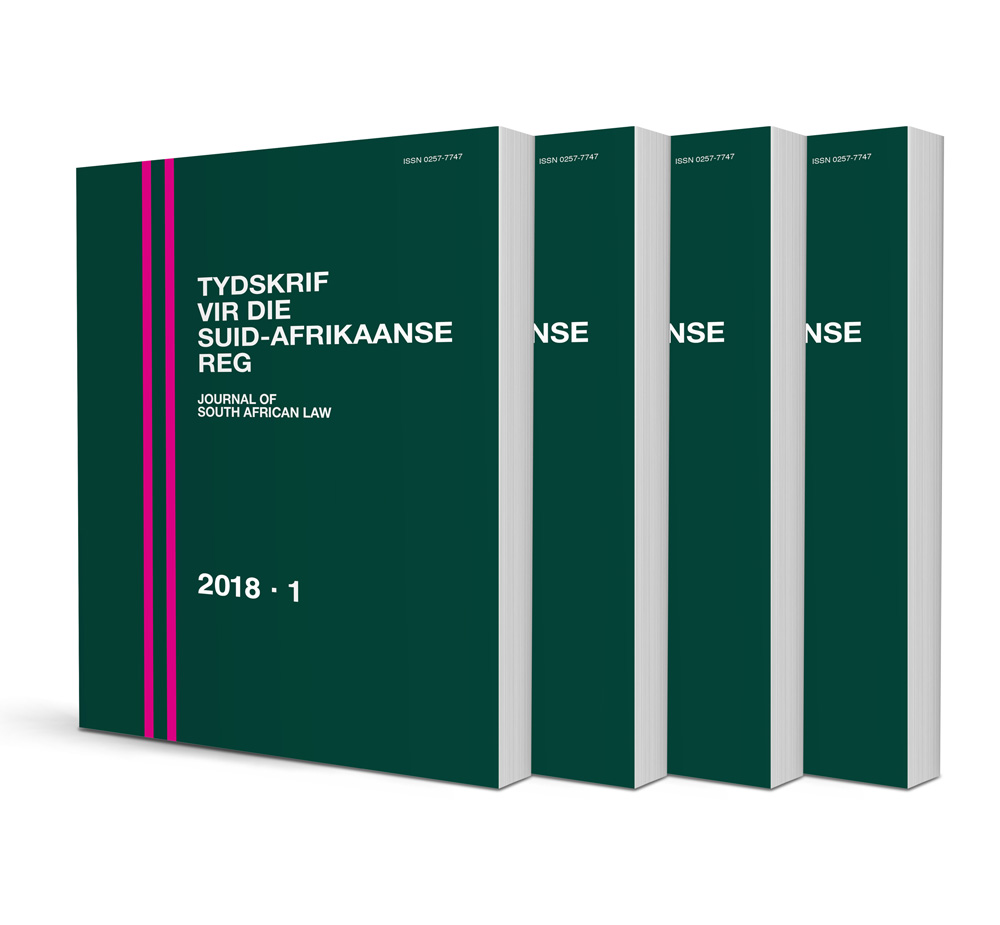
Aantekeninge: Trustaktes en die risiko’s van ’n onnadenkende kopiëring van template
Author: JC Sonnekus
ISSN: 1996-2207
Affiliations: Universiteit van Johannesburg
Source: Tydskrif vir die Suid-Afrikaanse Reg, Issue 2, 2024, p. 306-322
https://doi.org/10.47348/TSAR/2024/i2a7
Abstract
The formulations used in many deeds for a trust inter vivos are probably examples of the type of fallacy that accepts that because there are thousands if not millions of trust deeds for a trust inter vivos that have an identical preamble, they must be legally valid. In many of these trust deeds the preamble and first clause in essence reads:
“TRUST DEED
XYZ TRUST
ENTERED INTO BETWEEN
XYZ
Identity Number 801023 4567 089
(hereinafter referred to as FOUNDER)
and
XYZ
Identity Number 801023 4567 089
And
ABC
ID nr
And
DEF
ID nr
(hereinafter referred to as TRUSTEES)
ON BEHALF OF:
THE INCOME AND CAPITAL BENEFICIARIES AS DEFINED IN PARAGRAPH 1.2.1 OF THIS TRUST DEED
WHEREAS the founder is desirous of creating the trust herein referred to for and on behalf of the aforementioned beneficiaries subject to the terms and conditions as hereinafter set forth in more detail.
AND
WHEREAS the trustees declared themselves willing to accept the donation and to hold and utilise it on behalf of the beneficiaries subject to the conditions as set forth by the founder and as it is recorded in this deed of trust;
The founder hereby donates to the trustees the amount of R100 (One Hundred Rand) which immediately vests in the trustees in their official capacity to be held in trust and administered according to the terms of this deed.
The current trustees are as scheduled in the preamble to this deed …” (emphasis added).
In the example the agreement is seemingly concluded with itself by XYZ acting simultaneously as the founder and as primary trustee. However, it is an established legal and logical principle that a legal subject, with the possible exception of a recognised agency construction with an existing principal, cannot enter into an agreement with himself and that any attempt to establish such a construction is necessarily doomed to complete nullity. In the initial editions of LAWSA, this principle was repeated without qualification with regard to a representative construction: “a contract is a juristic act for which expressions of common intention by at least two persons are required”. The later qualification in the case law applies only to the said existing principal and agency arrangements.
The envisaged future trust inter vivos can be established, however, at the earliest after all the parties involved have signed the document to express their agreement to the terms incorporated in the agreement. Until then, there is still no trust, and no one can “in an official capacity”, in the sense that Honoré argues that trusteeship is an “office”, represent the non-existent trust.
Where a person seeks to conclude an alleged agreement with himself, the law attaches as little value to it as to an arbitrary New Year’s resolution – no legal consequences flow from it. Such an “agreement” is ab initio void and without any legal consequences. Void agreements cannot later be rectified. This is not to be confused with an incorrectly recorded agreement where any of the parties to the existing agreement is entitled to rely on their real consensus and to have the document formally corrected to express their true common intention.
Apparently, the trust deed in the example of the XYZ Trust above is void from the outset regardless of whether or not the master of the high court officially registered it later. The administrative act of registration by the master cannot amend the legal position and breathe legal life into a void document.
It is submitted that there is an easy way out of the self-caused “practice crisis” where the naïve use of the trusted template of the trust deeds unintentionally jeopardises the validity of these trusts because of the unnecessary cloning of the founder as primary trustee. The trusted template should be amended so that the founder does not allegedly contract with himself as trustee but merely enters into the agreement with the other two persons identified as the original trustees of the XYZ Trust. In order to give effect where applicable to the interest of the founder to retain as a trustee (albeit effectively as one of the controlling trustees) say in the execution of “his” trust, a simple additional conditional clause may provide for a resolutive condition that applies if the other two trustees with whom he as founder initially signed the trust deed do not enter into an agreement with him within the prescribed period in order to add him as an additional trustee on his acceptance of all the controlling powers provided for in the deed. The template often provides for the later appointment of additional trustees: “The current trustees are as scheduled in the preamble to this deed … but the trustees are entitled to appoint additional trustees of their own choice … .”